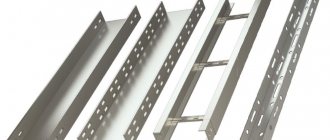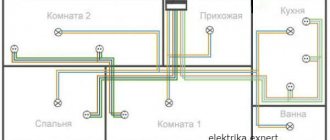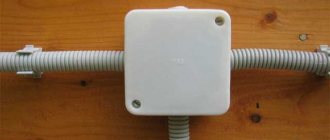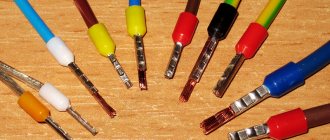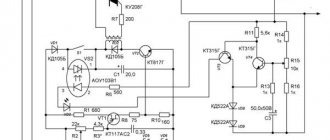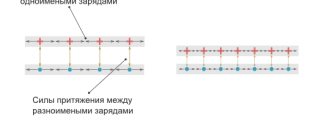It is impossible to imagine the modern world without various electrical appliances. They make our work easier, help automate some processes, and monitor various indicators in real time. The heart of any device is a printed circuit board, with electronic components, connectors and modules located on it, which are susceptible to mechanical stress and the environment. To protect them, a sealed housing is used, and cable glands are used for external sealed connections.
Junction box with connected cable entries
Components
Cable entry components:
- frame,
- spade cable clamp,
- cable gland,
- union nut,
- thread sealer
- counter nut.
Seals provide the necessary degree of protection against the penetration of moisture and solid particles. The union nut secures the cable with a spade clamp. The mating nut is used to clamp the sealed gland onto the device body or simply screw it in if there is a threaded hole in the body.
Main settings
The main parameter is the cross-section of the clamped cable. There are entries for thin cables (1-3mm) and for large diameter cables (up to 70mm). The next important parameter is the degree of protection against penetration (dust and moisture protection). It happens in the range IP54 (without protection from external influences) - IP68 (protection from jets of water at a depth of 1 meter). The main electromechanical characteristics are: withstand pressure difference, without loss of tightness (usually up to 5 Bar) and operating temperature range (depending on the material of manufacture and the type of pressure seal, it ranges from −60 to +100C)
Cable entry thread type:
- M - Metric thread, standard M12-M63 (but there are series with non-standard thread sizes from M6 to M100
- PG - Inch thread, standard PG7 - PG48
- NPT - Pipe thread, standard 1/2'' to 4''
Classification of pressure seals
From the point of view of manufacturing material, sealed bushings are available in plastic (PG 36 or MG) and metal (PG M or MG M). Their more detailed characteristics are given in the table.
| Brand of pressure seal | Diameter of external thread for the hole in the shield, mm | Wire hole diameter, mm |
| PG7 | 12,2 | 3-6,5 |
| PG9 | 15,2 | 4-8 |
| PG11 | 18,8 | 5-10 |
| PG13 | 20,5 | 6-11 |
| PG16 | 22,2 | 10-13 |
| PG21 | 28,2 | 13-18 |
| PG29 | 37,1 | 18-25 |
| PG36 | 47,1 | 22-32 |
| PG42 | 53,7 | 32-38 |
| PG48 | 59,3 | 37-44 |
Cable glands also differ in environmental characteristics. Here it is customary to distinguish two types:
- general industrial - provide moderate protection of the wire entry point;
- explosion-proof with grounding - used in rooms with explosive or aggressive chemical environments.
Waterproof cable gland PG16 IP68
Range
Today, the range of cable glands, glands and sealed glands is extensive and includes hundreds of models and thousands of modifications.
Plastic cable glands
The most common are standard plastic bushings. The material used to manufacture such glands is polyamide 6. The cable gland can also be made of fire-resistant polyamide 6, certified for fire safety class V0-UL94. The cable gland is made of TPV (Thermoplastic vulcanizates), the thread seal is an NBR (Nitrile Butadiene Rubber) rubber ring of round or flat section.
Selection of plastic sealed glands Ortac
Special notches can be made on the inside of the union nut to prevent unscrewing due to vibration loads. Such bushings can provide a high degree of protection up to IP68, protection against oils and alkalis.
Metal cable glands
The design of standard metal bushings does not differ from plastic ones. The housing of the cable gland and union nut is made of metal:
- Nickel-plated brass Grade MS58 (brass 58%, zinc 52%) / MS63 (brass 63%, zinc 37%)
- Stainless steel . The ASIS 300 series is used (Chrome-nickel stainless steel, the most versatile). The ASIS 400 series is also used (stainless steel with a high chromium content - retains its properties in corrosive and sulfur-containing environments, resistant to sudden temperature changes)
Metal cable glands and accessories
Typically, the seals for metal cable glands are NBR and TPV, but there are series of metal glands with silicone seals. As standard, a polyamide 6 spade clamp is used in the metal cable gland.
Types and types of cable glands
| With a blind rubber band (plastic only) - the cable entry is equipped with a plastic membrane (gasket) and can maintain the tightness of the housing without a pulled cable. To install the cable, you only need to pierce the gasket. | |
| With wire protection (plastic and metal) - inputs with spiral protection of the cable from breaking. The union nut is made with a spiral at the end. These bushings are used in devices subject to vibration loads or mechanical stress for additional protection of the cable from breaking. | |
| Multi-hole (plastic and metal) - used if it is necessary to stretch several wires of small cross-section through the sealed lead-in. The range of wire sections is from 3 to 9 mm. Provide protection - IP65 (dustproof, protected from jets of water) | |
| Flat cable entries (plastic and metal) - used to enter a flat cable into a sealed housing, cable width can be from 13 to 45 mm, height from 7 to 14 mm. Provide protection - IP65 | |
| Flat Nut (Plastic and Metal) - For less demanding applications, there is a range of Flat Nut cable glands available. Without a thread seal, the cable gland provides protection IP54, with a seal - IP65. | |
| With a wire clamp (metal only) - There is also a series of metal cable glands with a clamp. This series can be used to protect the cable from movement due to mechanical stress. | |
| EMC inputs (metal only). — For shielded cables there is a specially developed series of EMC cable glands. This series is designed for electromagnetic shielding of cable input by grounding to the shielding braid of the cable. Grounding is provided by special petals of the sealed lead-in, which reliably clamp the cable braid. | |
| Extra-large cross-section (metal only) - For very large cable cross-sections there is a series of extra-large metal cable glands from M63×1.5 to M90×2.0 | |
| Mini Cable Glands - For applications in confined spaces, the mini series cable glands can be used. The range of series sizes is from M6×1.0 to M12×1.5. The range of cable sections is from 2 to 8 mm. Provides IP68 and can be equipped, in addition to standard ones, with EPDM seals or silicone seals. | |
| Ventilation cable glands - a line of glands for equalizing pressure in sealed housings and protecting against condensation. Models have holes on the body and a hydrophobic membrane inside. Such a design provides air exchange, but does not allow moisture to pass through, thereby maintaining IP68 of the entire device. | |
| Glands with silicone seal (metal only) - are equipped with a silicone gasket, which provides a wider temperature range for the cable gland while maintaining IP68: from −60 to +200 C | |
| Germ-resistant bushings (metal only) are made in accordance with the US Department of Health Directive for “Equipment Use in Medical and Food Equipment.” The design of the inputs makes them difficult to dirty and facilitates cleaning, and a special membrane (TPE) prevents germs and bacteria from entering the device |
Benefits of use
Cable tester
Thus, the use of glands for laying cables inside electrical and distribution cabinets has a number of advantages:
- The reliability of contact of cables and wires connected to the devices increases, and the likelihood of them being pulled out of the electrical installation is reduced;
- The likelihood of dust and moisture getting on the contact part of electrical devices is reduced, which reduces the cost of servicing the electrical part of the equipment, as well as the occurrence of malfunctions associated with this negative impact.
Carrying out all installation work in electrical installations requires special knowledge, skills and craftsmanship, so before you start doing this work yourself, you should at least be present when they are carried out.
Explosion-proof bushings (Ex)
A separate category of metal bushings for use in hazardous areas. The key purpose of a pressure seal in such conditions is not to protect against explosion, as it might seem at first glance, but to prevent the penetration of flammable gases into the device. The sealed lead-in must not allow gas leakage between the seal and the cable sheath. Consists of a housing, a union nut, one or two cable glands, a threaded seal and a counter nut.
Explosion-proof EX bushings and accessories
In Russian practice, explosive zones are divided into several types depending on the presence in this zone of a highly flammable substance or dust, which forms an explosive mixture together with air.
Zone 0 (Zone 20) Explosive gas (dust) is present continuously or for an extended period of time
Zone 1 (Zone 21) - Explosive gas (dust) is not constantly present, but is likely to occur under normal operating conditions
Zone 2 (Zone 22) - Explosive gas (dust) can only appear as a result of equipment errors or breakdowns and is present for a short time
Design features
Cable tray
The cable gland is a structure consisting of:
- clamping and locking nuts acting as a lock;
- seals – for sealing cabinets in harmful, dusty and humid conditions;
- gear coupling, which additionally holds the cable for installation and operation.
The gland for laying cables inside electrical cabinets with a tightening mechanism consists of a set of individual elements, each of which has its own specific function
It is important to know! There are simpler and cheaper designs made of rubber and without a reliable bolt clamping mechanism. They are also called seals and serve to seal distribution cabinets. However, this mechanism inserted into the switchgear is unlikely to be able to fix the wire. They are more versatile and do not require much time to install. For them, when carrying out installation work and introducing the cable, you only need to cut a hole of the required diameter with a knife or a sharp object and insert the cable.
There are simplified types of pressure seals that are used in domestic conditions
Varieties
- Cable entry for armored wire with double seal
- Cable entry for armored wire with one seal
- Standard cable entry for unarmored wire
- Cable entry for unarmored wire for pipe systems
- Cable entry for armored wire with a flat nut.
To operate bushings in explosion-proof conditions, they must be certified according to international (ATEX standard) and Russian (compliance with technical regulations TR TS 012/2011) requirements.
Cable entry accessories
The functionality and capabilities of cable glands can be expanded through the use of various accessories:
- Threaded/cable plug, placed in place of the cable entry in the junction box to cover the hole. Maintains the IP of the device body in the absence of a cable entry. If necessary, it can be quickly dismantled/the plug can be made of polyamide or metal.
- Counter nut with and without collar, polyamide 6
- NBR/TPV O-ring seal
- Reducers and threaded adapters, nickel-plated brass
- For explosion-proof models also used
- Threaded plugs with different heads, for a socket wrench, with a round head for a hexagon, recessed under a hexagon. (brass, nickel-plated brass or stainless steel)
- Threaded adapters and reducers (brass, nickel-plated brass or stainless steel)
- Protective casing, fits over the sealed lead-in for additional protection TPV, PVC, LSF
- Ground contact, for glands for armored cables, MS64 nickel-plated brass or stainless steel
Accessories for cable entries
How to seal a cable entry - 7 effective ways
One of the most vulnerable places of any communications is the place where a cable or wire enters the wall of a building, into a switchgear, actuator, etc. Today, there are many options for protecting cable passages from moisture, we have tried to collect the most effective of them for readers site Electrician himself in this article. So, let’s figure out now how cable entries into a building, ASU cabinet, etc. can be sealed.
What standards and requirements exist?
The regulatory documents PUE 2.1.58 and SNiP 3.05.06-85 describe the requirements for cable passages:
According to the requirements listed above, it turns out that the cable entry in the building must be able to retain water, not support combustion and prevent the spread of fire. With all this, it is possible to re-replace the cable or wire, if necessary.
Sealing methods
To seal the input in a private house or cottage, fire-resistant polyurethane foam is most often used, evenly distributing it in the pipe around the cable. After hardening, the polyurethane foam is cut and partially compacted, pressing it into the pipe. The resulting depression is plastered with cement mortar. An example of such a cable line sealing option is shown in the photo below:
You can also try to use the old-fashioned method: rags cut into thin strips, liquid cement mortar and a piece of rag generously moistened with it are tamped with a wooden stick into the gap between the cable and the pipe.
Another commonly used method is the use of a sealant that fills the unevenness and voids between the hole and the insert sleeve, usually made of fiber cement, metal or plastic. Sealing the cable entry using this method has the advantage that the sealant does not harden, making the entry hole suitable for repair.
In addition, there are specialized professional materials on the market for sealing and production of hermetic bushings. For a sealed passage into a switchboard cabinet or actuator, a sealed cable gland is most often used - a PG gland, shown in the photo below:
A large range of models and different sizes make this solution simple and universal. The collapsible design of the cable gland allows it to be installed in completely different and convenient places for maintenance. At the same time, the presence of a rubber seal and the correctly selected size of the cable and sealed lead-in will allow achieving high levels of tightness, degree of protection IP54-IP68.
It should also be noted that this method of sealing the cable entry is the use of a sealant, which is concreted in the formwork, and a system cover. In appearance, this method of protection looks like this:
There are also specialized seals that allow reliable sealing of the cable entry using heat shrink, inflatable passages, gloves, etc. All these devices, as a rule, are imported, so the cost of this method of protection is quite high. In this case, it is more rational to consider simple, but effective and time-tested options.
The video below clearly shows several methods of how to seal the place where a cable line is inserted into a building or well:
So we looked at ways to seal cable entries. As you can see, there are quite a lot of effective options for protecting vulnerable spots from moisture. We hope the information provided was useful and interesting for you! If you have any questions, you can always contact an electrician!
We also recommend reading:
samelectrik.ru
